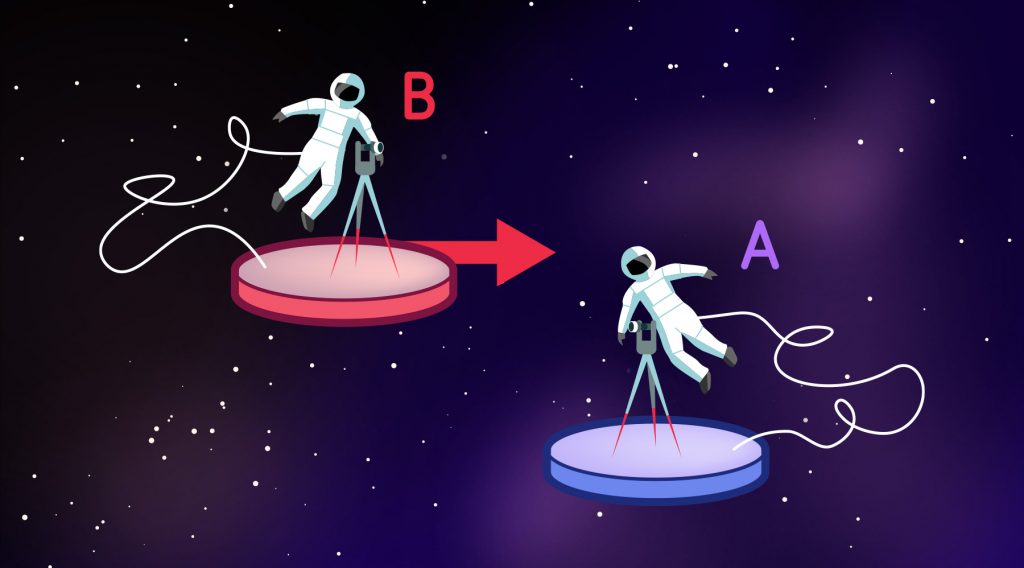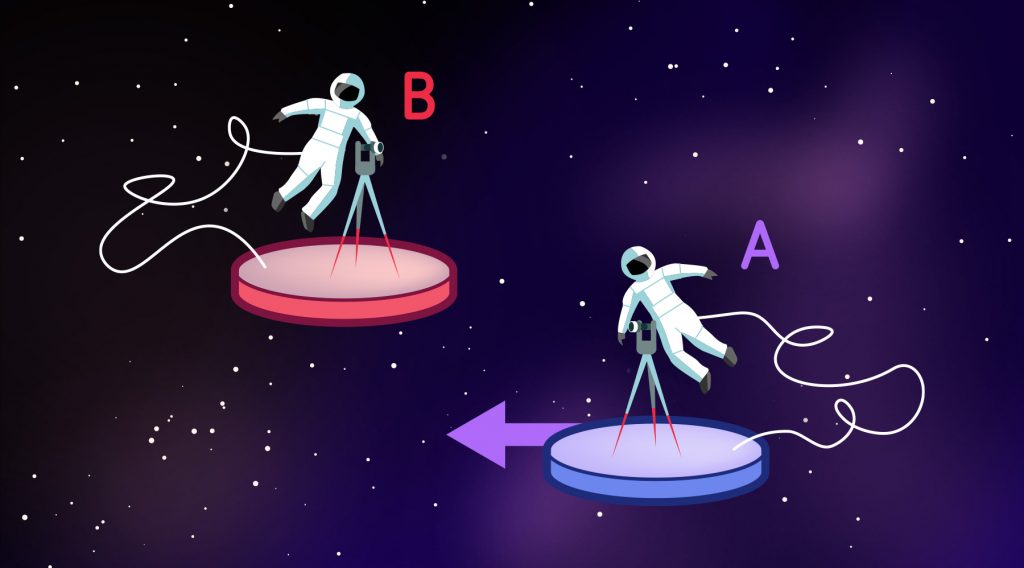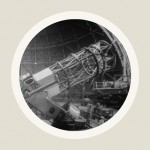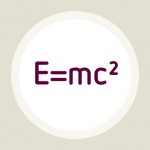Special relativity / Elementary Tour part 2: The principle of relativity
If you think about space stations drifting along in empty space, some statements that are surely relative spring to mind right away: statements about velocities. Imagine that, from the point of view of observer A sitting on the upper deck of his or own space station, the station of observer B passes by at considerable speed:

Two inertial observers: from space station A, B appears to me moving.
But from the point of view of observer B, his own station is at rest. For him, it is observer A’s station that is moving:

Two inertial observers: The situation as seen from space station B
So who is moving and who is at rest? The answer depends on which observer you ask. Whether or not a space station moves – and with what speed – is our first example of an observer-dependent, relative statement.
Could one address these issues without relativity? Is there no way for any of our observers to define “motion” not merely as relative to other stations, but in some absolute way? Hypothetically, there could be. It is thinkable that there might exist a state of absolute rest, and that each and every observer could detect his own motion relative to that state simply by performing certain physics experiments inside his own station. These key experiments would give a different result, depending on whether the experimenter is at absolute rest or moving. Each observer could determine his own state of absolute motion simply by experimenting, without any reference to the exterior world. A number of 19th century physicists thought that measuring the speed of light would be such a key experiment: If you measured exactly the same speed for light going in different directions, then you would be at absolute rest. If light appeared, in your laboratory experiments, to move slightly faster in one direction than in others, than that would indicate your absolute motion through the “ether”, the medium in which light was thought to propagate.
In the real world, there exists no such state of absolute rest. That’s the content of the so-called principle of relativity, which is one of the basic postulates of the special theory of relativity. According to this principle, the following holds: Whenever an inertial observer in his space station performs an experiment, any other inertial observer who has constructed exactly the same experimental setup in his own space station will get the same result. If observer A measures a certain wavelength for a specific atomic transition, so will observer B. If observer A measures a certain boiling point for a specific fluid under specific pressure conditions, observer B will measure the same. (Strictly speaking, this is only true for experiments that do give definite, repeatable results. When observer A measures a specific type of radioactive decay and notes down exactly how many atoms of an unstable element have decayed in a given time, observer B is likely to get somewhat different results – but so will observer A if he repeats his own experiment, as there is a random component involved.)










